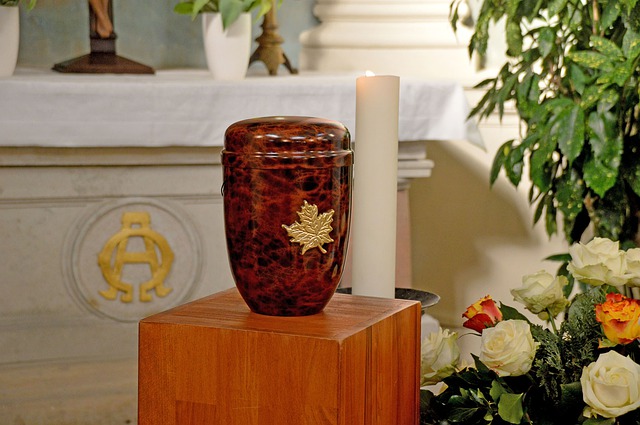 Anonymous writes: “Someone I know recently told me that loved ones of hers passed away. The family had their ashes split up and placed in jewelry. How can I explain the Catholic view on this for future reference? How can I explain it particularly when it comes to our Catholic faith and relics.”
Anonymous writes: “Someone I know recently told me that loved ones of hers passed away. The family had their ashes split up and placed in jewelry. How can I explain the Catholic view on this for future reference? How can I explain it particularly when it comes to our Catholic faith and relics.”Thank you for your willingness to catechize your neighbor!
The Church has issued very specific instructions about cremation and the proper conservation of the ashes of our loved ones, all of which is based upon our faith in the resurrection and the dignity of the human body.
In 2016, the Congregation for the Doctrine of the Faith published a new instruction on the proper burial of the dead and on the conservation of ashes in the case of cremation. The document confirms the 1963 instruction entitled Piam et Constantem, in which the Holy Office established that “all necessary measures must be taken to preserve the practice of reverently burying the faithful departed.”
Because of the increasing popularity of the practice of cremation and the various new ways of conserving ashes, the Church saw fit to issue this new instruction to give the faithful the clarity they need to make the right decision when choosing cremation for themselves or family members.
“When, for legitimate motives, cremation of the body has been chosen, the ashes of the faithful must be laid to rest in a sacred place, that is, in a cemetery or, in certain cases, in a church or an area, which has been set aside for this purpose, and so dedicated by the competent ecclesial authority. . . . [T]he conservation of the ashes of the departed in a domestic residence is not permitted. . . .[T]he ashes may not be divided among various family members and due respect must be maintained regarding the circumstances of such a conservation.”
The document continues: “In order that every appearance of pantheism, naturalism or nihilism be avoided, it is not permitted to scatter the ashes of the faithful departed in the air, on land, at sea or in some other way, nor may they be preserved in mementos, pieces of jewelry or other objects.”
As the document explains, the Church prefers the practice of burying the bodies of the deceased, “because this shows a greater esteem towards the deceased” and properly reflects our belief in the resurrection of Christ, which is the culminating truth of the Christian faith.
“Because of Christ, Christian death has a positive meaning," the document explains. "By death the soul is separated from the body, but in the resurrection God will give incorruptible life to our body, transformed by reunion with our soul. In our own day also, the Church is called to proclaim her faith in the resurrection: ‘The confidence of Christians is the resurrection of the dead; believing this we live’.”
Therefore, it is in memory of the death, burial and resurrection of the Lord that burial is above all the most fitting way to express faith and hope in the resurrection of the body.
“By burying the bodies of the faithful, the Church confirms her faith in the resurrection of the body, and intends to show the great dignity of the human body as an integral part of the human person whose body forms part of their identity.”
For this reason, “She cannot…condone attitudes or permit rites that involve erroneous ideas about death, such as considering death as the definitive annihilation of the person, or the moment of fusion with Mother Nature or the universe, or as a stage in the cycle of regeneration, or as the definitive liberation from the ‘prison’ of the body.”
This is why burial in a cemetery or another sacred place “corresponds to the piety and respect owed to the bodies of the faithful departed who through Baptism have become temples of the Holy Spirit and in which “as instruments and vessels the Spirit has carried out so many good works.”
There is a vast difference between cremains and relics. Cremains are the human remains of individuals who have been cremated. Relics are the remains of recognized saints.
According to this article, appearing in the Southern Nebraska Register, the newspaper for the Diocese of Lincoln, “It’s important to note that the Church promotes the veneration of the relics of saints, not just anyone. The saints have been canonized by the Church, declaring them to be with God in all His glory. Relics remind the faithful of the reality and attainability of holiness, with the grace of God. And contrary to cremains held in a domestic residence, relics are meant for public veneration.”
In other words, only the remains of saints – not just the saintly – can be considered as relics.
Official relics, which are sacramentals, come in three classes. The first class is the blood, bone of any part of the body of a saint. A second class relic includes any object that came in close contact with a saint or Jesus, such as an article of clothing. The third class are objects that have been touched to either the first- or second-class relics.
Even though a relative of ours may have led an exemplary life, we are not the judge of whether or not they are saints whose ashes can be venerated as relics.
If we truly want to honor our dead who have been cremated, we should embrace the Church’s teaching about the beauty and dignity of the human body and follow Her instructions on how to properly bury their remains.
© All Rights Reserved, Living His Life Abundantly®/Women of Grace® http://www.womenofgrace.com

